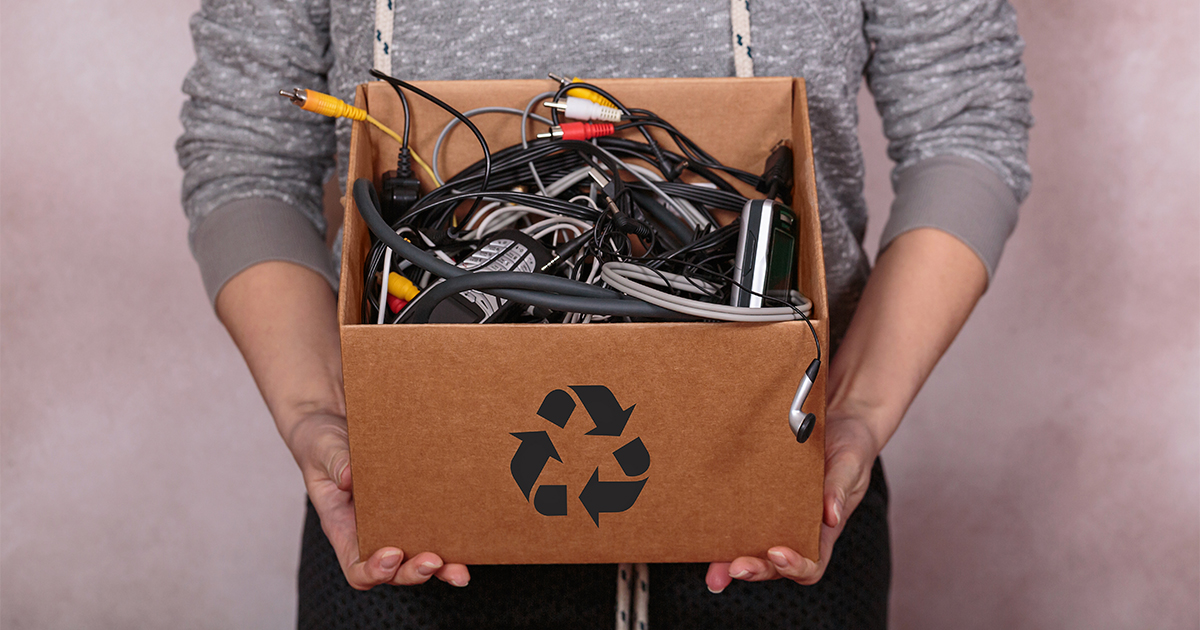Hyundai Motorstudio Senayan Park
Hyundai Motorstudio Senayan Park
Newsroom
The official news from Hyundai Motorstudio Senayan Park and a collection of innovative articles on mobility and sustainability here.
-
Simple Tips for Managing Electronic Waste for Contemporary Families
- Hyundai Motorstudio Senayan Park Senayan Park 2025.10.01
-
Electronic waste, or often called e-waste, is electronic devices that are no longer used, damaged, or obsolete. Examples include cell phones, computers, televisions, and other electronic household appliances. With the rapid advancement of technology, the amount of e-waste continues to increase and is becoming one of the serious environmental problems.
Based on the latest data on September 17, 2025 released by the Ministry of Communication and Information Technology (Kominfo) through Kominfo Digital Indonesia, in 2022 Indonesia will produce around 1.9 million tons of electronic waste. This number shows a significant increase compared to previous years, reflecting the rapid growth of the consumption of electronic devices in the community.
The growth of electronic waste is triggered by the rapid development of technology and the high turnover of electronic devices such as smartphones, computers, televisions, and other electronic household appliances. However, e-waste management in Indonesia still faces various obstacles, including low public awareness and limited recycling infrastructure.
E-waste contains various hazardous materials such as mercury, lead, cadmium, and other toxic chemicals that if not managed properly can contaminate soil, water, and air. The impact not only damages the environment, but also endangers human health, especially if the waste is disposed of carelessly.
Therefore, good e-waste management is essential to protect the environment and public health. In addition, e-waste also contains valuable materials that can be recycled to reduce the use of new natural resources.
How to Reduce E-Waste at Home
Reducing e-waste can start at home with a few simple steps that can be done by the whole family:
1. Extend the Life of Electronic Devices
Taking care of electronic devices to keep them durable is the first way to reduce waste. Use a screen protector, clean it regularly, and avoid overuse that could accelerate damage. If there is a minor damage, try to repair it rather than replace it immediately.
2. Choose Products that are Easy to Repair and Quality
When buying a new device, choose a product that is of good quality and easy to repair. Avoid products that break down quickly or are difficult to repair because they will become waste faster.
3. Donate or Sell Devices That Are Still Working
If you have a device that is still working but no longer in use, consider donating or selling it. This helps reduce waste while also providing benefits to others.
4. Avoid Overbuying
Consider it carefully before buying a new device. Avoid buying gadgets just because of a trend or a momentary desire so as not to add to electronic waste.
E-waste recycling process
E-waste recycling is an important process to reprocess valuable materials and reduce the impact of waste on the environment.
1. Collection and Sorting
E-waste is collected and sorted by type and material from which it is made. This sorting is important so that the recycling process runs efficiently and materials can be used optimally.
2. Material Crushing and Separation
The sorted device is broken into small pieces. Then materials such as metal, plastic, and glass are separated using special technology.
3. Recovery and Processing
The materials that have been separated are reprocessed into raw materials for new products. This reduces the need for new raw materials and saves energy.
4. Hazardous Waste Management
Toxic materials such as mercury and lead are processed safely so as not to pollute the environment and harm human health.
The Positive Impact of Good E-Waste Management
Proper e-waste management provides many benefits, including:
- Reduce Environmental Pollution: Avoid soil and water contamination that is harmful to the ecosystem.
- Conserves Natural Resources: Reduces the exploitation of new raw materials by utilizing recycled materials.
- Reduces Carbon Emissions: Efficient recycling processes reduce carbon emissions compared to the production of new materials.
- Protects Human Health: Reduces the risk of exposure to toxic materials that can cause disease.
- Driving the Circular Economy: Opening up jobs and business opportunities in the recycling sector.
Tips for Involving Families in E-Waste Management
Involving families in e-waste management makes this process more effective and educational. Here are some tips that can be done:
- Education and Awareness: Teach families about the dangers of e-waste and the importance of proper management.
- Provide a Special Place: Create a special place to collect e-waste so that it doesn't mix with regular garbage.
- Participate in a Collection Program: Invite your family to participate in an e-waste collection program organized by the community or government.
- Create a Regular Schedule: Determine the time to sort and deliver e-waste to the treatment site.
- Give Example: Parents set an example by implementing good waste management at home.
E-waste is a major challenge for the environment and human health. However, with proper management, we can significantly reduce its negative impact. Start at home by extending the life of your devices, choosing quality products, and involving your family in e-waste management.
Recycling e-waste not only reduces pollution but also saves resources and energy. Let's take care of the earth together with these simple steps for a cleaner and healthier future.




